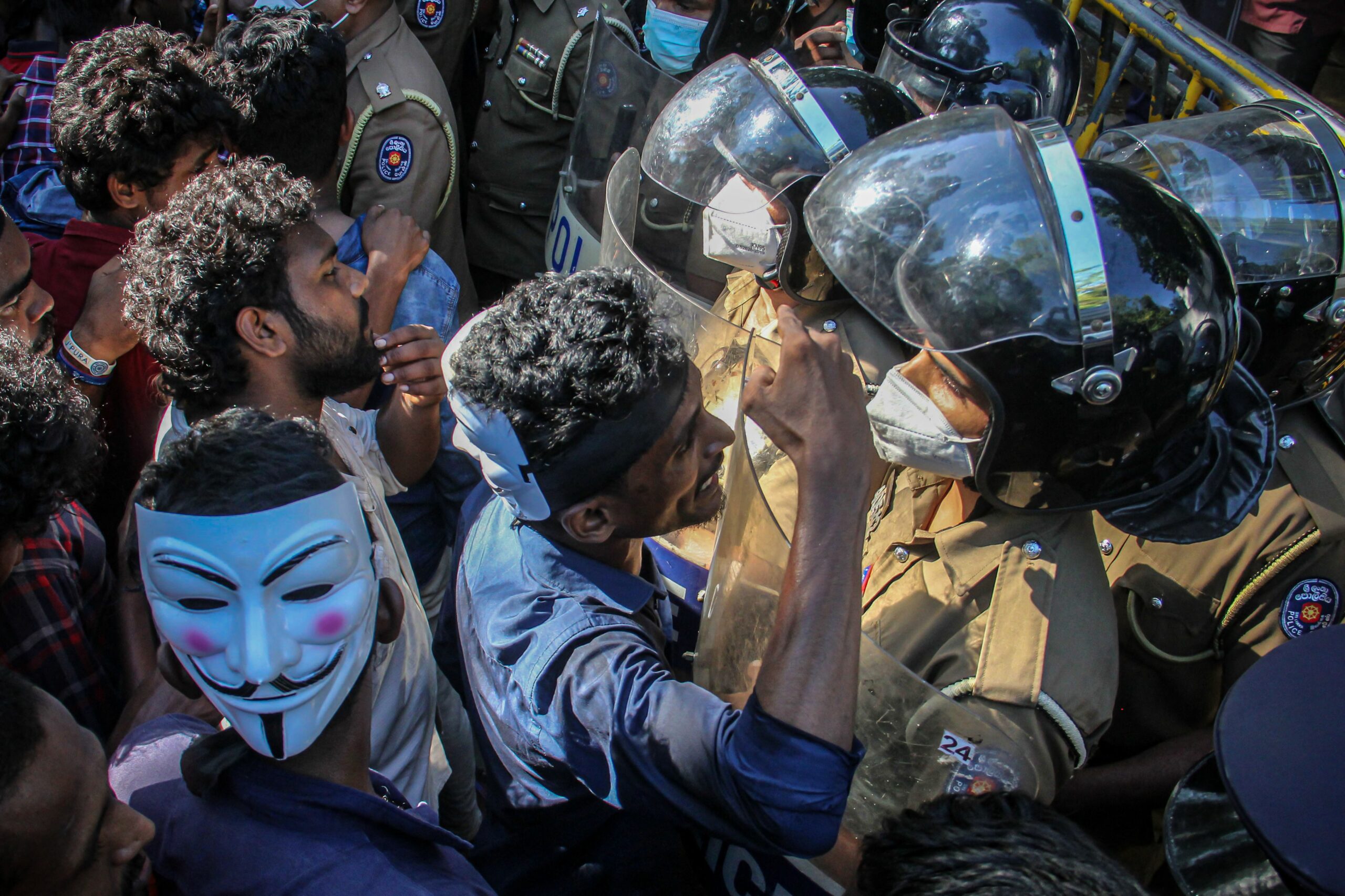Ongoing anti-government protests in Sri Lanka are unlikely to escalate into widespread violent unrest, on current indications.
This assessment was issued to clients of Dragonfly’s Security Intelligence & Analysis Service (SIAS) on 26 April 2022.
Overall protests have remained largely peaceful, and for now, our sources in Colombo say there is little appetite among activists or the authorities to resort to widespread violence. With few signs that a solution to the country’s political or economic crisis is likely anytime soon, frequent protests will probably persist in the coming weeks.
Protests have fallen into a fairly clear pattern over the past six weeks or so. The only exception was on 19 April when police shot and killed a protester. That was the first and only incident of security forces using lethal force. Gatherings are occurring almost daily in every major city countrywide, data from the Armed Conflict Location and Event Data Project suggests (see the map below). The largest have been those organised by opposition parties and trade unions. Several thousand people have been gathering mainly outside government buildings.

Turnout at such organised protests is likely to run into the tens of thousands in the coming week. Opposition groups are reportedly organising a march from Kandy to Colombo, which they intend to begin today, 26 April, and conclude on 30 April in time for Labour Day on 1 May. We have not seen indications of a likely turnout in the local press or on social media. But Labour Day has frequently drawn large demonstrations in recent years, and several thousand activists have already been holding a sit-in at Galle Face in Colombo.
There is a heightened risk of violent confrontations between police and protesters at smaller spontaneous protests, particularly compared with large organised opposition-led demonstrations. These have typically been emerging outside of petrol stations due to frustrations among customers over rising prices and long queues. Protesters have on occasion blocked roads or railway lines, prompting the security forces to intervene. However, responding police have rarely resorted to forcibly dispersing participants. On the few occasions that they have, officers have typically used tear gas and baton rounds.
There are still few signs that a violent crackdown against protesters is likely. Officials, including the Rajapaksa brothers, quickly condemned the recent death of the protester, which occurred in the Kegalle district, around 85km east of Colombo. Authorities have also reportedly recalled the officers involved in the incident. Acts of violence by protesters have also been rare; although police had claimed that the protesters in Kegalle had set fire to a fuel truck, that had the potential to endanger lives. Organisers have largely repeated their calls that protests remain peaceful.
Scenario for escalation to widespread unrest
There are two scenarios in which we assess that episodes of violence during anti-government protests would become more frequent, intense and widespread over the coming weeks. The first would be a sudden, significant worsening of what is an already dire economic situation. In our analysis, these would encourage protesters to escalate their currently peaceful tactics. Signs that such a scenario is becoming likely include:
- Reports that the government is no longer able to pay for imported goods
- Evidence that existing shortages are becoming more acute and widespread
- The government announces plans to impose new taxes or reduce subsidies
A second scenario for an escalation to unrest would involve the authorities attempting to end protests by force. In our assessment, the most probable trigger for the security forces to adopt such a strategy would be activists adopting violent tactics during protests, particularly if these specifically target security personnel or officials. Such incidents prompted police to use lethal force in 2018. While the government still appears hesitant to do this, there are indicators we are monitoring that would signal that such a response is becoming likely:
- The government imposing an indefinite countrywide state of emergency
- Officials hardening their rhetoric towards protesters, such as by describing them as terrorists
- Officials attempting to divide the protest movement by blaming particular ethnic or religious groups for violence
- Protesters engaging in violent tactics, particularly targeting security forces and infrastructure
- Claims by officials that activists are arming themselves
- Changes to policing rules that allows them to use lethal force if threatened
We assess there is a reasonably high chance of the first scenario in the coming months, as shortages continue and the economic crisis worsens. The second scenario remains unlikely in the near term, especially whilst the government is in talks with international creditors that require good governance.
Image: University students protest outside the residence of Sri Lanka’s prime minister Mahinda Rajapaksa during a demonstration over the country’s crippling economic crisis in Colombo on April 24, 2022. Photo by AFP via Getty Images.







